Breast
The glamor of the breast is brought down to earth with a bump by the anatomists who define it as a “modified sweat gland.”
The normal location of the breast (mammary gland) is lateral to the midline, with its central point, the nipple, at the level of the 4th intercostal space, and in post-menarche youth extends in the female between the 2nd and 6th intercostal spaces, lying on the surface of the deep fascia that covers the pectoral muscles. With age and pregnancy the breast may become pendulous, but its base does not move.
The milk line from the axilla to the groin is a potential for nipples or vestigial breaststo be located elsewhere.
The center of the breast is marked by the colored conical nipple and its surrounding areola; elsewhere the breast is smooth, and usually in the female bears few hairs. The outer coat is normal skin, with a varying degree of fatty tissue in the subcutaneous layer.
The gland tissue is constructed rather like a grape vine; there are ovoid lobules which in lactation produce the milk; these empty into small ducts which are joined by others until the main stem duct, the ductus lactiferi is formed and leads to the nipple, with an opening much narrower than the duct itself, and usually with a distended lactiferous sinus immediately proximal to the opening. The gland tissue is structured into recognizable divisions, into lobules and lobes by fibrous septa connected to the subcutaneous fascia.
The space between the glandular tissue is filled with fiber and fat. The fibers are organised as supporting ligaments for the breast tissue, named after the anatomist and surgeon, Sir Astley Cooper, and giving cause for the vulgar medical student to refer to the pendulous breast as Cooper’s droop.
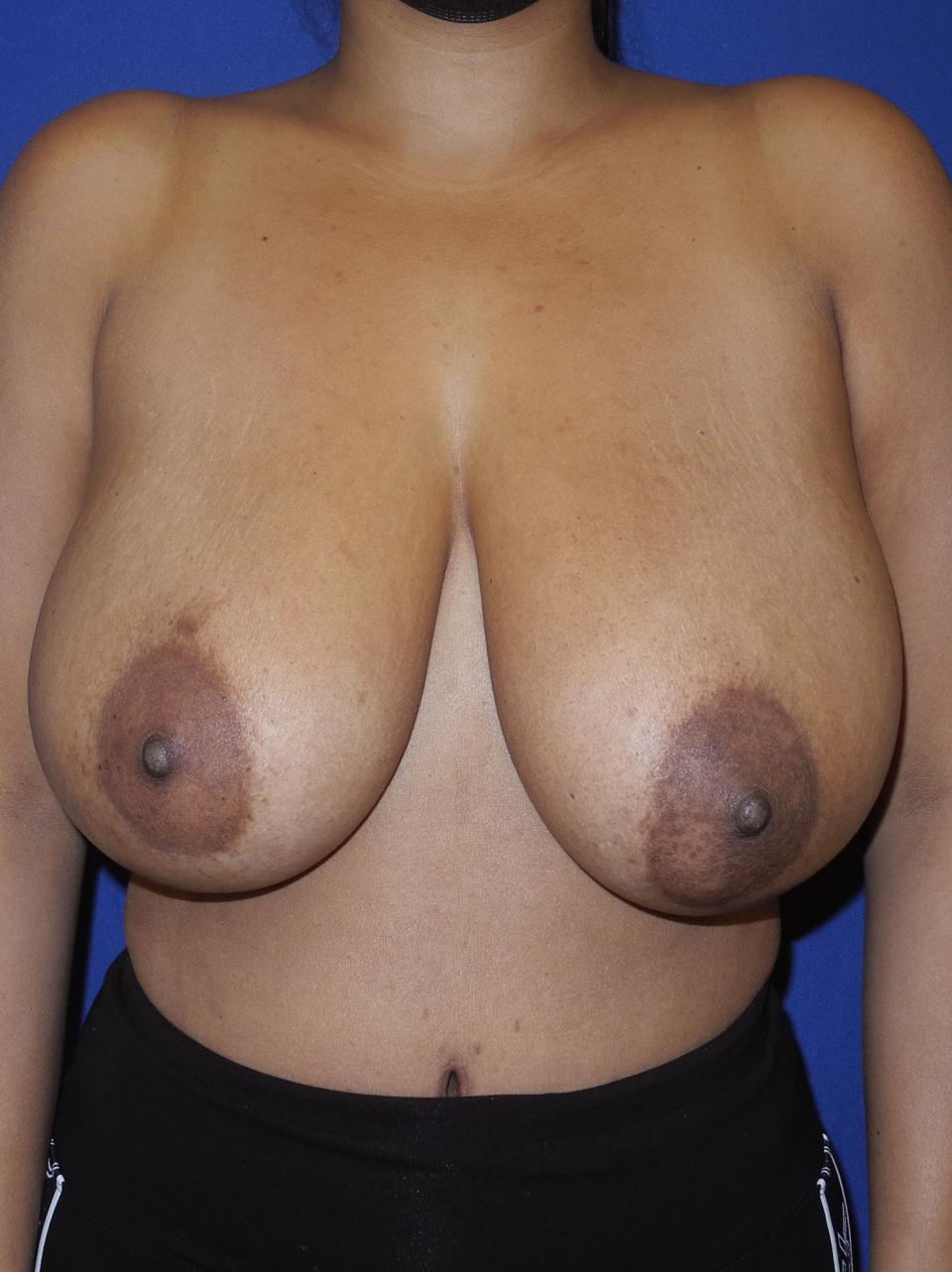 before
before
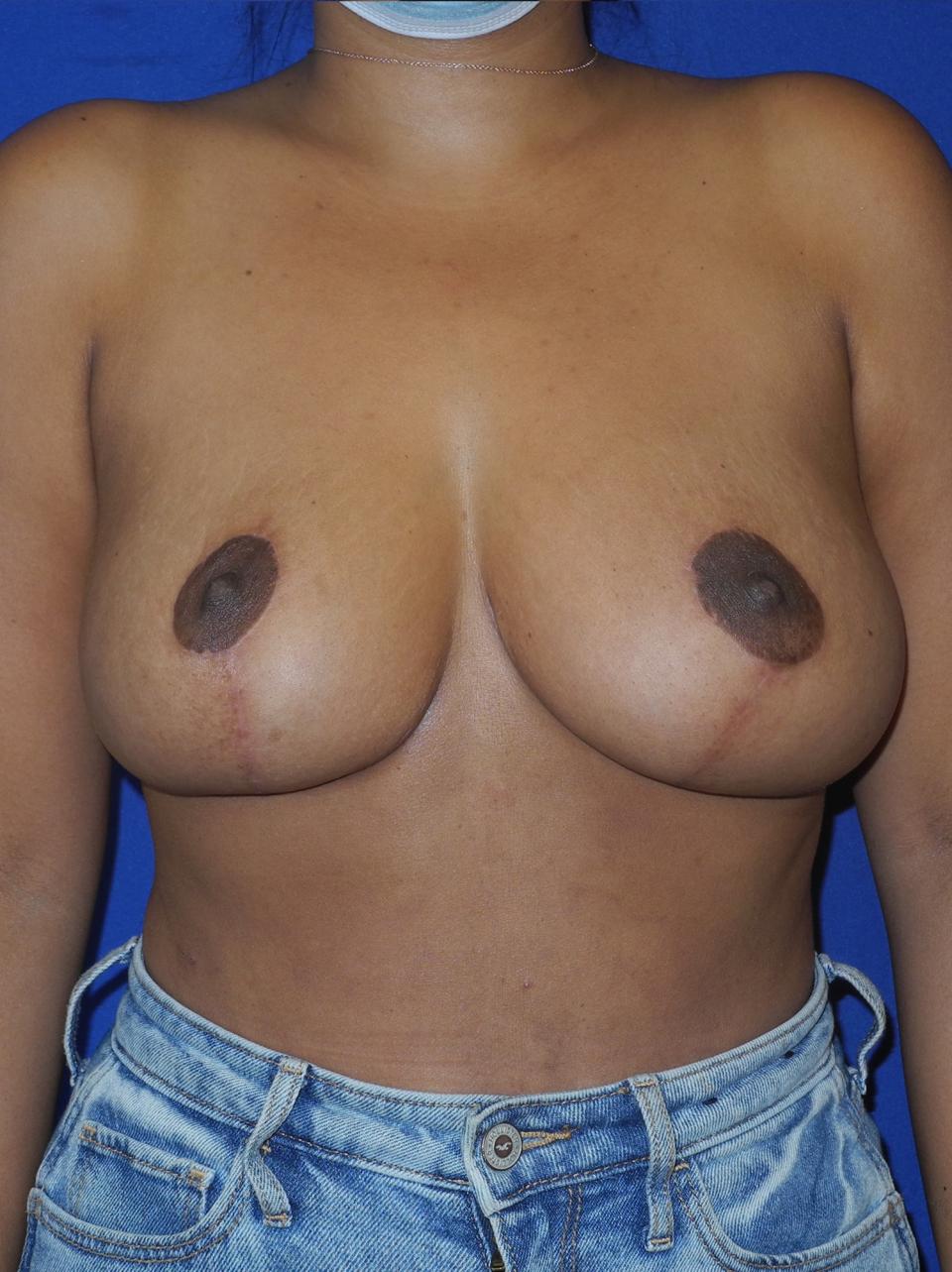 after
after
This individual underwent a breast reduction in which just over two pounds of weight was removed from the breasts. The breasts were shortened in length and lifted to give a rounder appearance. This photograph was taken at approximately four months following surgery.
Liposuction of the tissue that lies between the upper outer quadrant of the breast and the upper arm can decompress the density of tissue between the breast and the arm and improve the fit of certain types of clothing.
 before
before
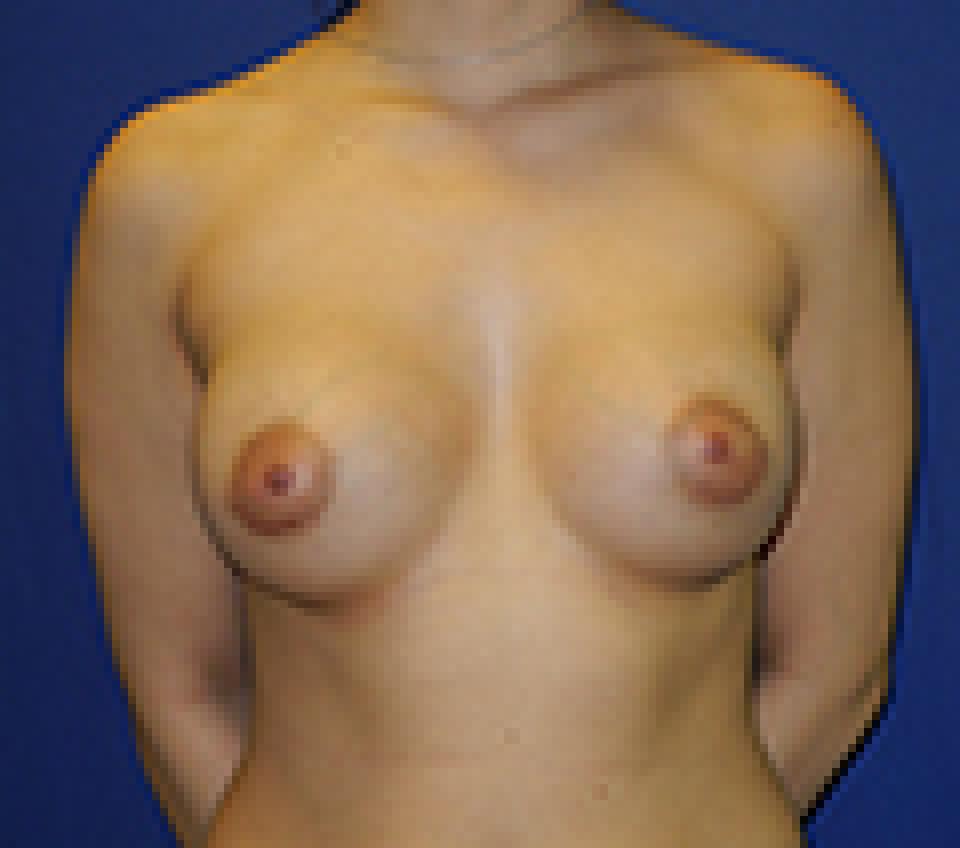 after
after
This 22 year old woman underwent bilateral augmentation mammaplasty using saline filled breast implants inflated to a volume of 320 cc’s place partially beneath the pectoralis muscle.
This individual wished to have the largest possible cup size while still appearing to have relatively natural breasts.
In my opinion, this implant size was the largest round implant that could be inserted, while still maintaining a natural appearing breast shape.
With the new anatomic shaped implants, which are shaped more like a teardrop, it is possible to achieve larger breast sizes and still maintain a natural shape.
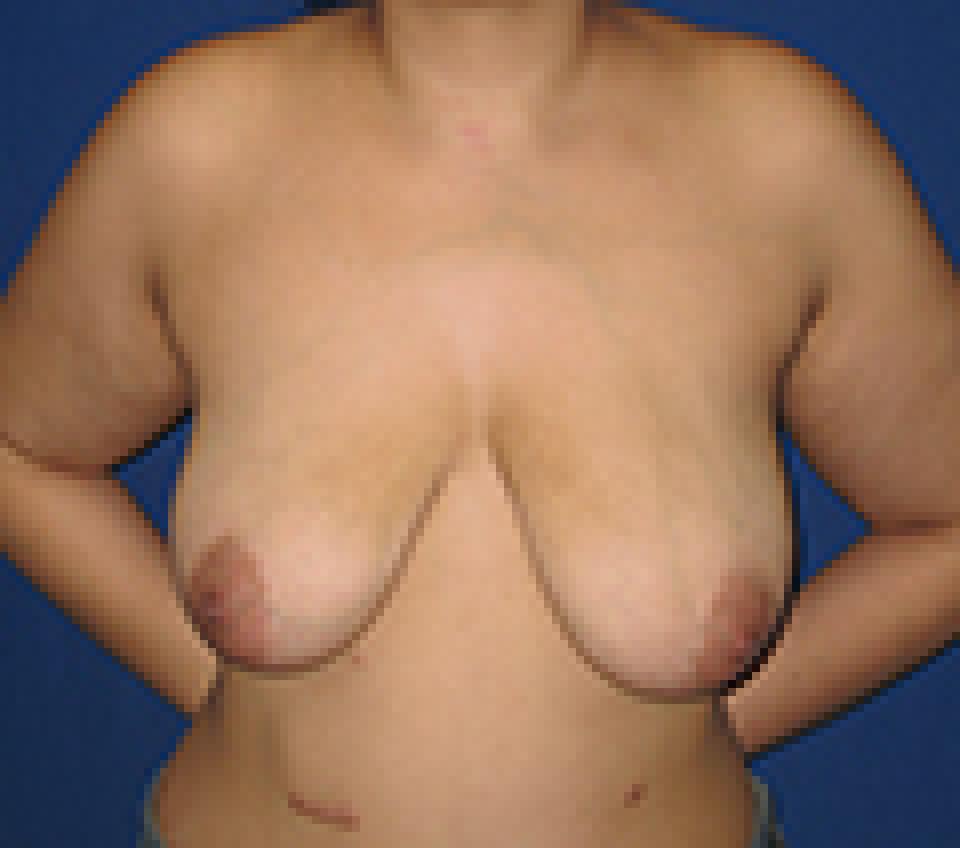 before
before
 after
after
This 35 year old woman reached her plateau weight after losing 56 pounds following bariatric surgery. She had breast lift or mastopexy using a short scar technique which leaves behind scars in the shape of a “lollipop.” Some breast lifts or mastopexies are performed using a technique that results in scars that look like an “anchor,” but I prefer to use this shorter scar technique because scars are never visible in the cleavage nor on the side of the body beneath the arm. This makes swimsuit selection much easier.
This woman has a history of poor scar healing. It is relatively easy to see dark and thickened scars on her abdomen from her bariatric procedure. I feel that it is especially advantageous to avoid the “anchor” shaped scar in individuals whose scars do not heal well.
When performing a breast lift or mastopexy, very little breast tissue is removed. Instead, the existing breast tissue is rearranged so that the new breast shape is typically shorter and rounder than it was previously.
Performing a breast lift in an individual who has lost a great deal of weight is often very challenging. They tend to have an extreme amount of skin excess and relatively little breast tissue. As such, a great deal of skin must be removed while significant effort is made to preserve every bit of breast tissue possible to achieve a natural looking breast.
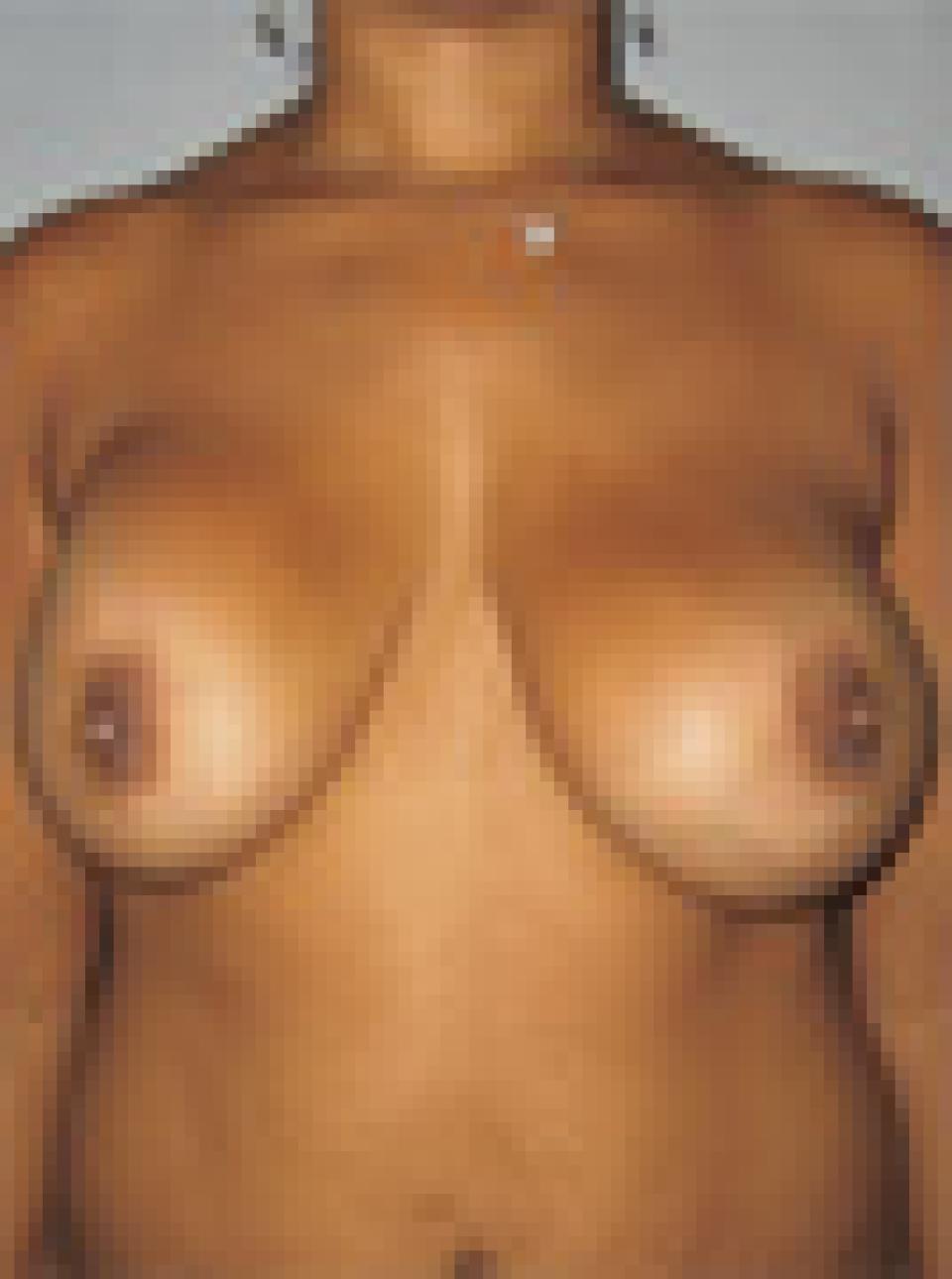 before
before
 after
after
This case depicts a 30 year old woman who had undergone breast augmentation with 300 cc smooth, round saline implants placed above the pectoralis muscles via a periareolar incision by another surgeon approximately one year prior to her consultation with Dr. Belsley.
Her Grade IV capsular contracture was revised by exchanging her implants and placing the new 330 cc smooth, round saline implants below the pectoralis muscle and performing a vertical or "lollipop" incision breast lift. The post-operative photographs depict her appearance just under one year after her corrective surgery.
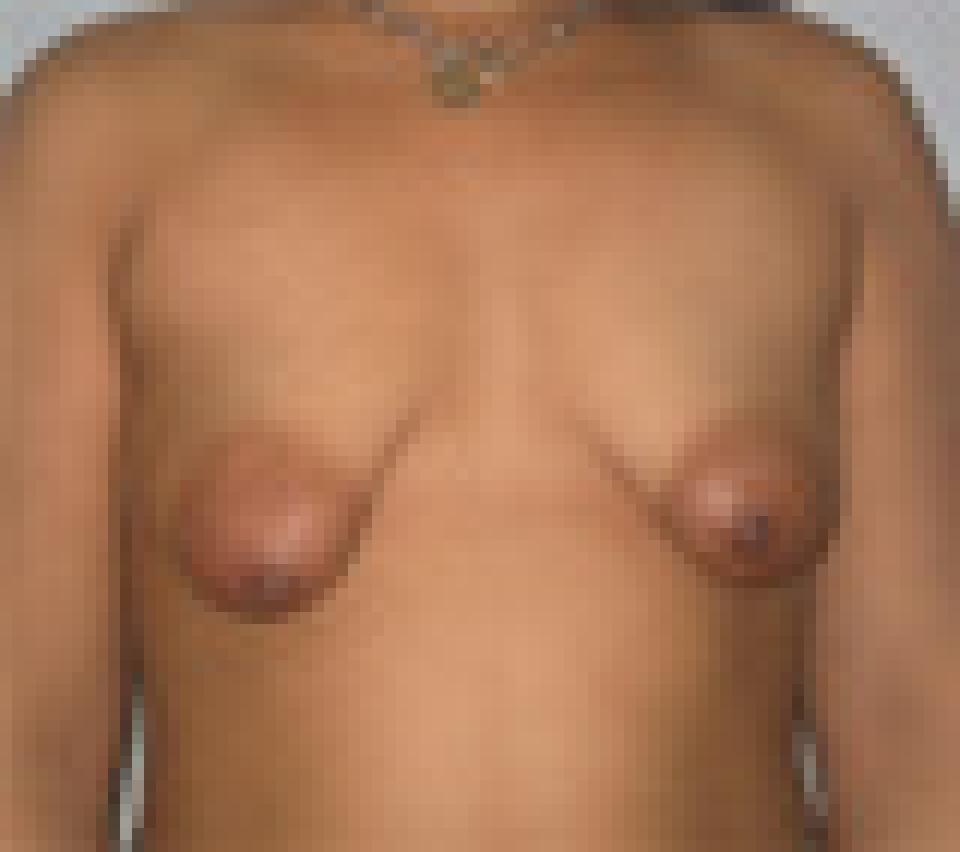 before
before
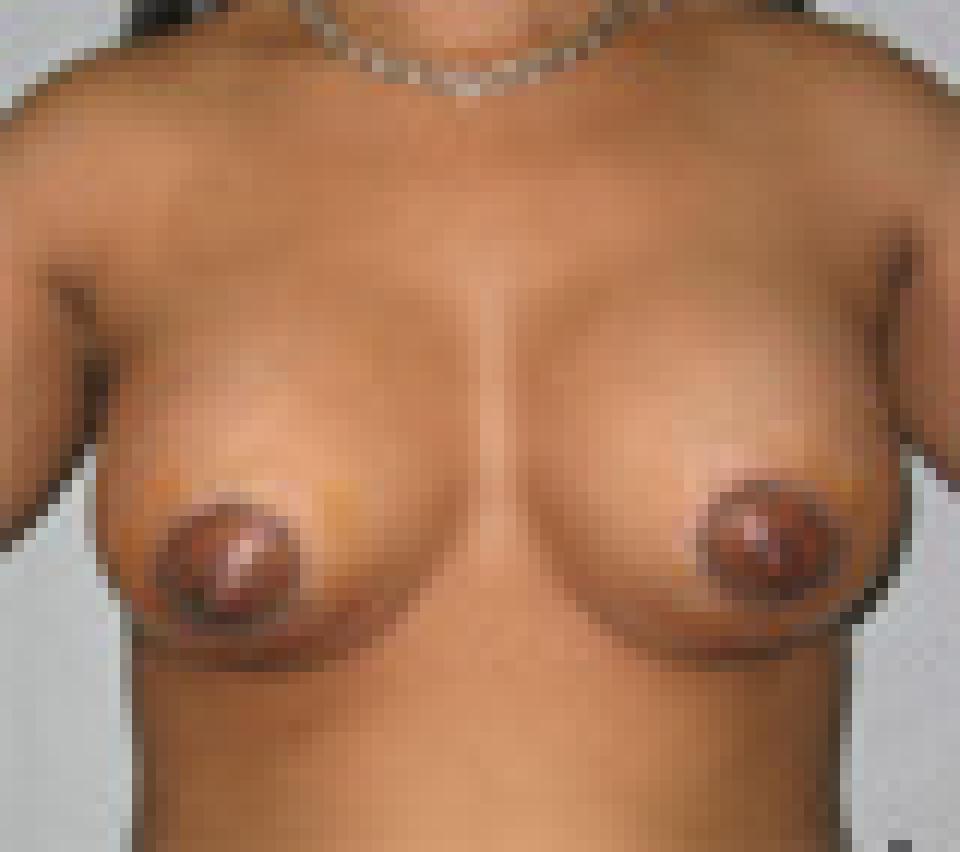 after
after
This case depicts a 24 year old woman with a tuberous breast deformity who underwent breast augmentation with 330 cc smooth, round, saline implants placed beneath the pectoralis muscles via a periareolar approach.
Her areolas were reduced simultaneously, necessitating an incision completely around the perimeter of the areola.The post-operative photographs depict her appearance at two weeks after surgery.
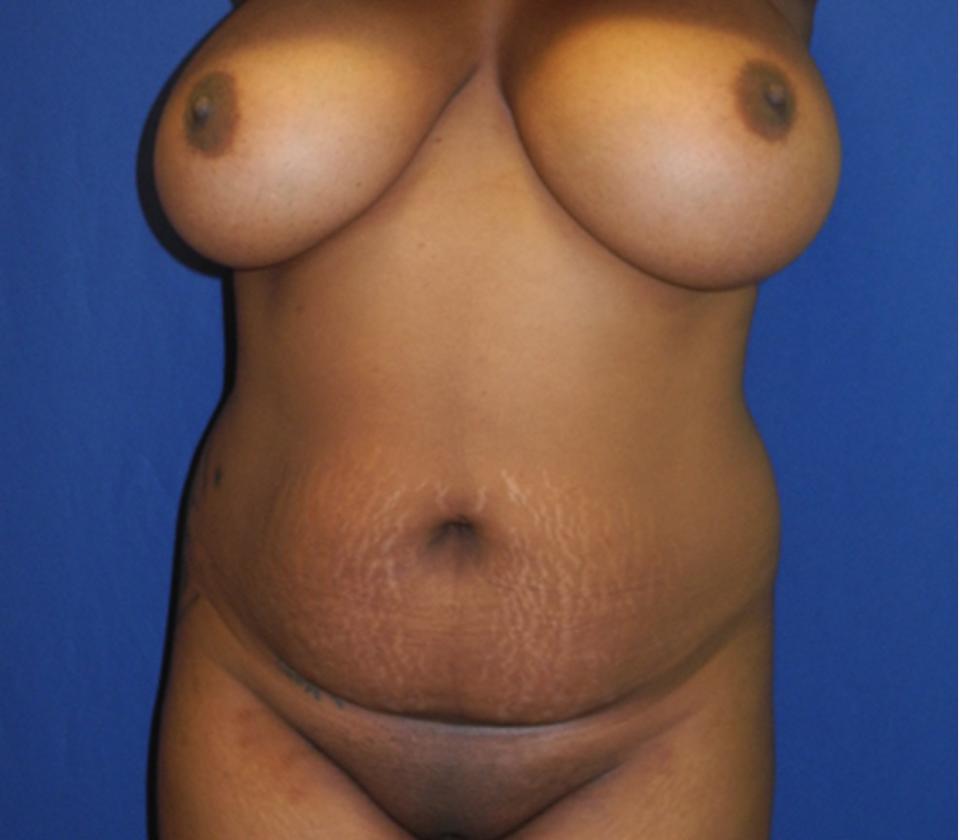 before
before
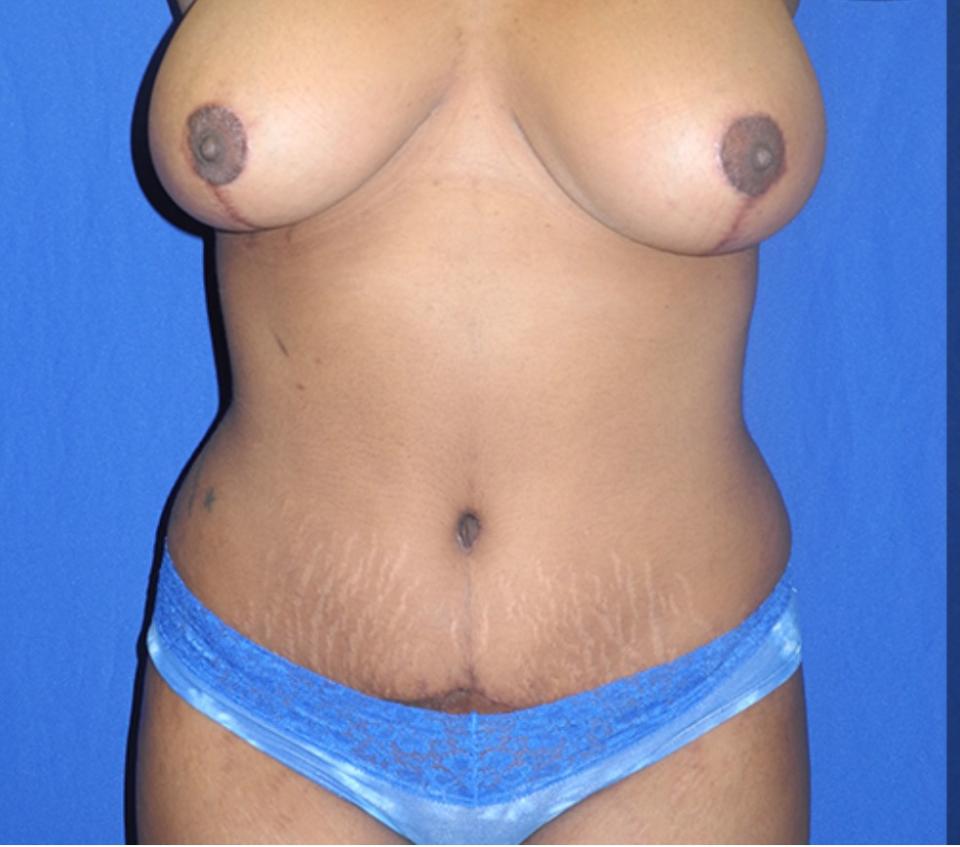 after
after
This 25 year old woman with a preoperative BMI of 31.8 underwent abdominoplasty along with circumferential liposuction. This procedure treats the trunk or mid-section of the body as one unit all the way around. I believe that this method results in a more harmonious result than treating just the front with an abdominoplasty or just the back with liposuction.
In my practice, I tend to use ultrasound assisted liposuction to perform liposuction of the back, because I feel that in my hands, this technique allows me to remove more fat, more thoroughly than other forms of liposuction.
I try to keep the lower abdominal scar low enough such that it is not difficult to find a number of swimsuit choices will cover it without difficulty and also as short as possible- usually less than 12 inches in length.
Questions Related to Breast
Dr. Belsley's Philosophy of Breast Augmentation
When it comes to deciding what approximate breast size you wish to achieve, the best advice I can give you is that you should be guided by your physical frame. Indeed, you may in fact be limited by it. In my practice, I select implants based upon your chest measurements, the quality of your breast skin and the size of your breasts prior to surgery.
I perform breast augmentation through a peri-areolar or inframammary approach and I place that vast majority of implants at least partially beneath the pectoralis muscle. My patients are welcome to select either saline or silicone filled breast implants. Silicone filled implants can in some cases achieve a more natural feel and may be a particularly attractive option for women with less breast tissue prior to surgery.
More >>Breast Reduction Ideals
Once I have removed enough tissue to achieve an appropriate breast size, the nipple and areola are repositioned, which means that the new, smaller breast also has a “lifted” appearance. While this is not the primary goal of this procedure, it is a fantastic secondary benefit of it. I strive to achieve the same aesthetic standards when I perform medically necessary breast reduction as I do for cosmetic breast lift or mastopexy. Since stretching of the areola is a common problem in patients with very large breasts, I typically reduce the size of the areola during breast reduction.
More >>Dr. Belsley's Philosophy of Breast Lift (Mastopexy)
In my practice, I perform breast lifts using incisions that result in a “lollipop” shaped scars. With good care and a bit of luck, these incisions heal well and the scars are difficult to see from a distance. Nevertheless, a woman who undergoes a cosmetic breast lift must be prepared for scars that are visible. This is one example of a “trade-off” in plastic surgery and of course, there are many others. This is one, however, that I feel is more than worthwhile in appropriate candidates.
More >>Dr. Belsley's Philosophy of Breast Revision
I apply the same criteria to patients who have had their surgery elsewhere as I do to my own patients. I am typically reluctant to re-operate on a breast augmentation patient for minor issues, because each time one undergoes revision, many of the risks of surgery tend to be multiplied. This is why I spend a great deal of time discussing size preferences and the likely outcome of surgery with my patients pre-operatively. It is said frequently that the most common reason for re-operation of the breasts in women who have had breast augmentation surgery is that they wish to “go bigger.” Ultimately, I feel that this is a poor reason to undergo repeated surgical procedures that can only result in more scar tissue, which is unpredictable, and thinning of the native tissues, which are necessary to cover the implant and provide a natural looking result. I encourage patients to think carefully about the risks of revision in cases where there is not a major problem.
More >>Dr. Belsley's Philosophy of Male Breast Reduction
Treatment for gynecomastia can be approached in several ways and is largely dependent upon the “type” of tissue in the chest that needs to be reduced. A physical examination is necessary to create a plan for treatment. Most of the time, I treat these individuals with a combination of ultrasonic liposuction and removal of glandular and breast tissue through a small incision on the border of the areola. Some individuals will be able to achieve excellent results with ultrasonic liposuction alone. Others, may require more extensive incisions. My goal is to give you a natural looking masculine shape that is well proportioned with the rest of your body using the shortest incision possible.
More >>